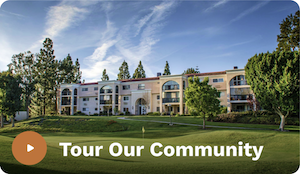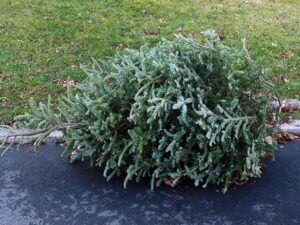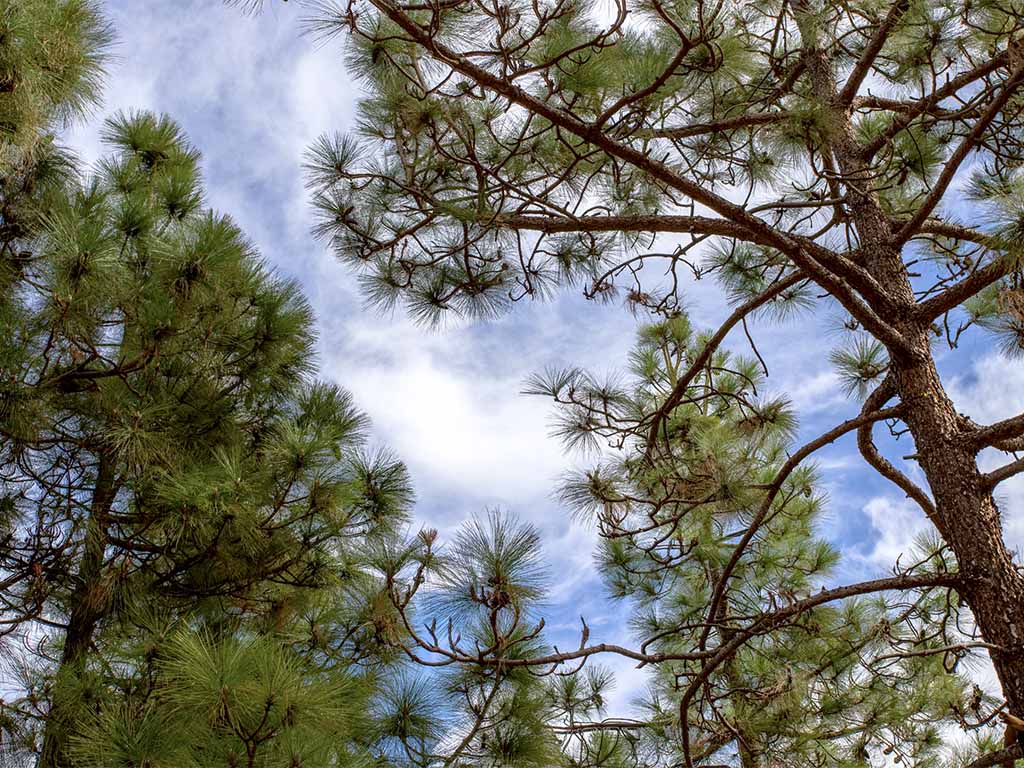Una de las razones que se suele mencionar por la que los residentes eligen vivir en Laguna Woods Village es su exuberante vegetación y su desfile aparentemente interminable de árboles majestuosos y maravillosamente diversos.
La visión del extenso dosel verde de la comunidad surgió desde sus inicios, cuando una práctica bienintencionada, pero poco perspicaz, de plantar en exceso casi garantizaba que algún día algunos árboles presentarían problemas. Algunos de los pinos canarios del pueblo ya los presentan.
Es una práctica común que los promotores inmobiliarios planten una sobrepoblación de árboles en las nuevas comunidades para que el paisaje tenga un aspecto más denso y atractivo para los posibles compradores. Cuando se construyó esta comunidad, la mayoría de los pinos canarios se plantaron en arboledas o grupos de tres a nueve árboles. Muchos de estos grupos se plantaron cerca de edificios, cocheras y aceras.
Dentro de estas agrupaciones, debido a la madurez de los árboles, las copas se han vuelto cada vez más densas con el tiempo, lo que afecta negativamente su salud a largo plazo.
La densidad de la copa de los árboles plantea otra preocupación importante. La cantidad de agujas, piñas y ramas que caen sobre los techos de edificios y cocheras cercanas ha bloqueado canaletas, desagües de techos, desagües de patios y bajantes, lo que supone un coste considerable para United Mutual en reparaciones estructurales. United Mutual gasta casi 150.000 T/T al año en limpiar las agujas de pino de las canaletas. Eliminar los árboles cerca de los techos de estas arboledas permitirá que los árboles restantes desarrollen copas frondosas y sanas sin afectar negativamente la estética general del área.
En otoño de 2020, la Junta Directiva de United y el Comité de Paisajismo de United solicitaron al personal que investigara la posibilidad y el costo de retirar pinos maduros que presentaran al menos una de las siguientes características: arboledas, deterioro de la salud, conflicto entre el edificio y los techos y canaletas, copas densas que dificultan el crecimiento del césped, copas densas que causan una gran cantidad de multas por recolección de hojas y daños a la infraestructura. En marzo de 2021, el personal presentó los hallazgos preliminares al Comité de Paisajismo, que posteriormente les indicó que desarrollaran un proyecto y solicitaran propuestas para la obra.
El personal también investigó la poda reconstructiva de los árboles en lugar de su tala. Muchos de estos árboles superan con creces los 18 metros de altura y son de difícil acceso. La poda reconstructiva tiene un costo promedio de $1320 por árbol; la tala, de $1552 por árbol. La poda reducirá algunos de los efectos negativos, pero seguirá siendo necesario un mantenimiento continuo.
United Mutual cuenta con aproximadamente 18,640 árboles; es decir, 79 árboles por acre. En comparación, Third Mutual tiene 39 árboles por acre. El proyecto propuesto mantendría la densidad arbórea de United prácticamente sin cambios, en 77 árboles por acre, lo que representaría la eliminación de aproximadamente 2% del arboricultura de la mutua.
El director del Departamento de Servicios de Paisajismo, Kurt Wiemann, y su personal son firmes defensores de los árboles y jamás talarían un árbol innecesariamente. Su labor es proteger los activos de United Mutual, y esta propuesta busca precisamente eso. El número inicial de árboles indicado es solo un punto de partida; nuestros arboristas trabajarán con los residentes durante los próximos tres meses para reexaminar los árboles afectados identificados y así garantizar la salud de nuestro bosque urbano y la calidad de vida de nuestros residentes.
NOTA: Tras escuchar las preocupaciones de los residentes, el Comité de Paisajismo de United Mutual decidió suspender el proyecto para su posterior revisión. Se indicó al personal que contratara a un especialista ambiental y a un arborista externo para revisar el proyecto propuesto y sus impactos.
Para más noticias del Village, haga clic en la etiqueta “Qué pasa en el Village” a continuación.





